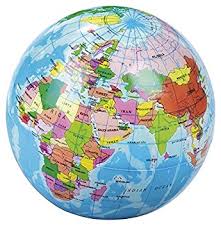Do you want BuboFlash to help you learning these things? Or do you want to add or correct something? Click here to log in or create user.
#globo-terraqueo-session #has-images #reading-globo-terraqueo


From an investment perspective, it is important to understand the complex and dynamic nature of international trade and capital flows because investment opportunities are increasingly exposed to the forces of global competition for markets, capital, and ideas.
If you want to change selection, open original toplevel document below and click on "Move attachment"
ed on comparative advantage. The flow of financial capital (funds available for investment) between countries with excess savings and those where financial capital is scarce can increase liquidity, raise output, and lower the cost of capital. <span>From an investment perspective, it is important to understand the complex and dynamic nature of international trade and capital flows because investment opportunities are increasingly exposed to the forces of global competition for markets, capital, and ideas. <span><body><html>
Global investors must address two fundamentally interrelated questions: where to invest and in what asset classes? Some countries may be attractive from an equity perspective because of their strong economic growth and the profitability of particular domestic sectors or industries. Other countries may be attractive from a fixed income perspective because of their interest rate environment and price stability. To identify markets that are expected to provide attractive investment opportunities, investors must analyze cross-country differences in such factors as expected GDP growth rates, monetary and fiscal policies, trade policies, and competitiveness. From a longer term perspective investors also need to consider such factors as a country’s stage of economic and financial market development, demographics, quality and quantity of physical and human capital (accumulated education and training of workers), and its area(s) of comparative advantage.1 This reading provides a framework for analyzing a country’s trade and capital flows and their economic implications. International trade can facilitate economic growth by increasing the efficiency of resource allocation, providing access to larger capital and product markets, and facilitating specialization based on comparative advantage. The flow of financial capital (funds available for investment) between countries with excess savings and those where financial capital is scarce can increase liquidity, raise output, and lower the cost of capital. From an investment perspective, it is important to understand the complex and dynamic nature of international trade and capital flows because investment opportunities are increasingly exposed to the forces of global competition for markets, capital, and ideas. This reading is organized as follows. Section 2 defines basic terminology used in the reading and describes patterns and trends in international trade and capital flows. It also discusses the benefits of international trade, distinguishes between absolute and comparative advantage, and explains two traditional models of comparative advantage. Section 3 describes trade restrictions and their implications and discusses the motivation for, and advantages of, trade agreements. Section 4 describes the balance of payments and Section 5 discusses the function and objectives of international organizations that facilitate trade. A summary of key points and practice problems conclude the reading.
Parent (intermediate) annotation
Open ited on comparative advantage. The flow of financial capital (funds available for investment) between countries with excess savings and those where financial capital is scarce can increase liquidity, raise output, and lower the cost of capital. <span>From an investment perspective, it is important to understand the complex and dynamic nature of international trade and capital flows because investment opportunities are increasingly exposed to the forces of global competition for markets, capital, and ideas. <span><body><html>
Original toplevel document
Reading 19 International Trade and Capital Flows IntroductionGlobal investors must address two fundamentally interrelated questions: where to invest and in what asset classes? Some countries may be attractive from an equity perspective because of their strong economic growth and the profitability of particular domestic sectors or industries. Other countries may be attractive from a fixed income perspective because of their interest rate environment and price stability. To identify markets that are expected to provide attractive investment opportunities, investors must analyze cross-country differences in such factors as expected GDP growth rates, monetary and fiscal policies, trade policies, and competitiveness. From a longer term perspective investors also need to consider such factors as a country’s stage of economic and financial market development, demographics, quality and quantity of physical and human capital (accumulated education and training of workers), and its area(s) of comparative advantage.1 This reading provides a framework for analyzing a country’s trade and capital flows and their economic implications. International trade can facilitate economic growth by increasing the efficiency of resource allocation, providing access to larger capital and product markets, and facilitating specialization based on comparative advantage. The flow of financial capital (funds available for investment) between countries with excess savings and those where financial capital is scarce can increase liquidity, raise output, and lower the cost of capital. From an investment perspective, it is important to understand the complex and dynamic nature of international trade and capital flows because investment opportunities are increasingly exposed to the forces of global competition for markets, capital, and ideas. This reading is organized as follows. Section 2 defines basic terminology used in the reading and describes patterns and trends in international trade and capital flows. It also discusses the benefits of international trade, distinguishes between absolute and comparative advantage, and explains two traditional models of comparative advantage. Section 3 describes trade restrictions and their implications and discusses the motivation for, and advantages of, trade agreements. Section 4 describes the balance of payments and Section 5 discusses the function and objectives of international organizations that facilitate trade. A summary of key points and practice problems conclude the reading.
Summary
| status | not read | reprioritisations | ||
|---|---|---|---|---|
| last reprioritisation on | suggested re-reading day | |||
| started reading on | finished reading on |
Details
Discussion
Do you want to join discussion? Click here to log in or create user.